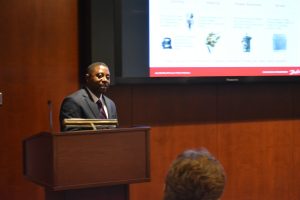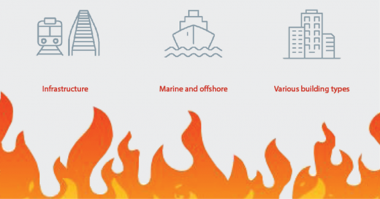On Wednesday, October 11, Danfoss and the Danish Embassy in the US hosted a briefing on Capitol Hill that illustrated the attainable impact of motor drives on America’s water systems and energy productivity. The mutual dependence of energy and water and increasing global demand for each has an enormous impact on economic growth, environmental sustainability and our future.
A cornerstone of President Trump’s election campaign and a bi-partisan priority, investment in infrastructure is an active topic in the United States today. Water crises like those in Flint, Michigan have raised public awareness of the poor or deteriorating condition of America’s water delivery and treatment systems.
Nearly 70 stakeholders participated in the briefing to bring attention to the important topic of America’s Aging Infrastructure. Lars Gert Lose, Ambassador of Denmark to the US, offered introductory remarks and underscored the importance of the issue. “There are costs associated with clean, safe drinking water. Investment is needed, but we have solutions available that are energy neutral.”
Other speakers included:
- Congressmen Dan Lipinski (D-IL) and John Duncan (R-TN)
- Molly Walton, Energy Analyst, International Energy Agency
- Boima Morray, Marketing Director, Danfoss
- Thomas Kunetz, Assistant Director of Engineering, Metropolitan Water Reclamation District of Greater Chicago (MWRD)
- Maureen Holman, Sustainability Chief, DC Water
The International Energy Agency’s (IEA) recent assessment of the water-energy nexus in its World Energy Outlook was the background for the briefing which showcased examples of successfully implemented energy-efficient water delivery and wastewater treatment systems, and illustrated the attainable impact of motor drives on improving America’s energy productivity. The International Energy Agency’s 2016 World Energy Outlook report predicts that by 2040, the water industry’s energy consumption will almost double. With demand for water continuing to accelerate, decoupling the water industry’s growth from its energy and reducing water leakage needs to be a key objective for policymakers.
In its World Energy Outlook report, the IEA identified the efficiency potential of electric motor systems and the capacity for energy neutrality in the water sector, noting that electric motor systems consume more than 50 percent of the global electricity consumption; almost 30 percent of that is consumed by industrial motor systems. And, with the IEA identifying that four percent of total worldwide electricity is used in the water and wastewater sector, it’s clear that the importance of finding cost-effective solutions to meet global energy-efficiency targets has never been higher on the agenda. Molly Walton of the IEA, commented that “Energy neutrality in municipalities’ wastewater can be reduced nearly one-third by applying existing technologies and solutions.”

Boima Morray describes how Danfoss technologies, like Variable Frequency Drives, can help create an energy-neutral water cycle
In his remarks, Boima Morray commented “For decades, Danfoss Drives has been at the forefront of developing AC drives that optimize the energy efficiency of electric motor systems to reduce energy bills. Of the total energy reduction potential, 30 percent can be addressed by using AC drives to adapt the variable load. And, looking into an industry-specific example, providing proven technologies can create an energy-neutral water cycle, significantly reduce the electricity bill of municipalities, and help to establish smart energy systems.”
There is a huge, untapped potential to improve efficiency and reduce water losses, saving both energy and water. The speakers called for support in regulations and funding to update our aging infrastructure. Maureen Holman of DC Water summed up the discussion with her comment, “Managing linkages is pivotal to improve energy security, public health and economic development.”
Danfoss engineers technologies that enable the world of tomorrow to do more with less. We meet the growing need for infrastructure, food supply, energy efficiency and climate-friendly solutions. Our products and services are used in areas such as refrigeration, air conditioning, heating, motor control and mobile machinery. We are also active in the field of renewable energy as well as district heating infrastructure for cities and urban communities. Our innovative engineering dates back to 1933 and today Danfoss is a world-leader, employing more than 25,000 employees and serving customers in more than 100 countries. We are still privately held by the founding family. Read more about us at www.danfoss.com.






Comments